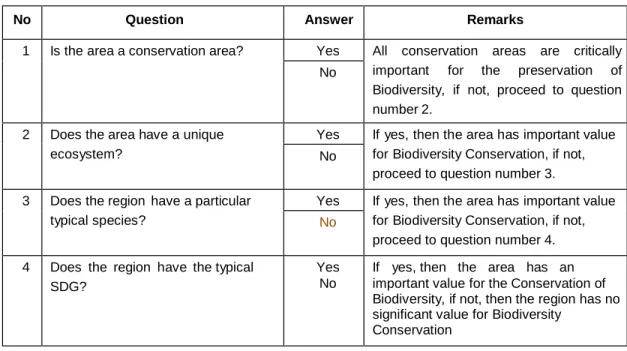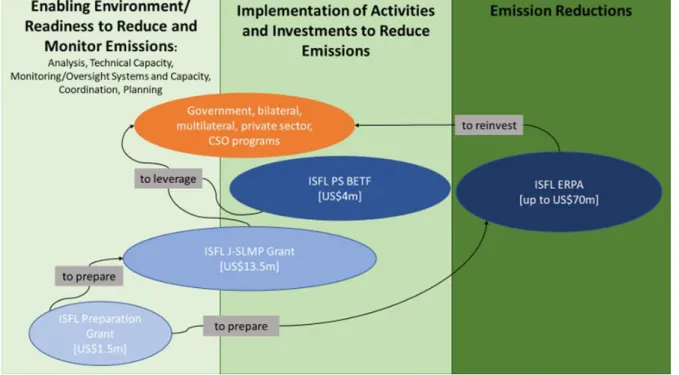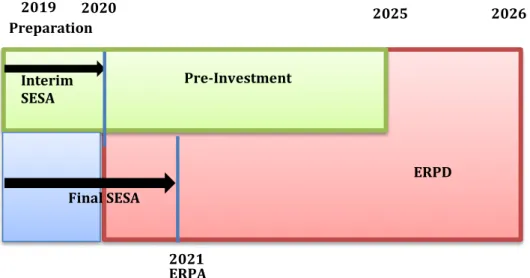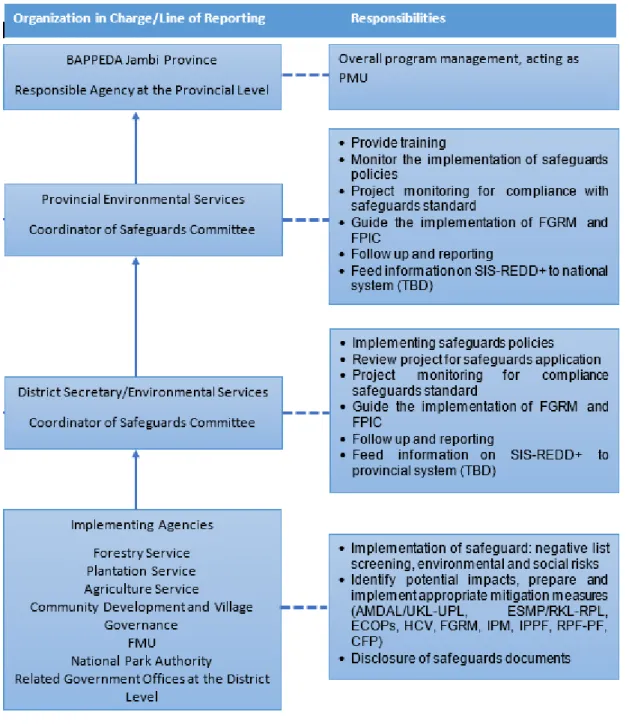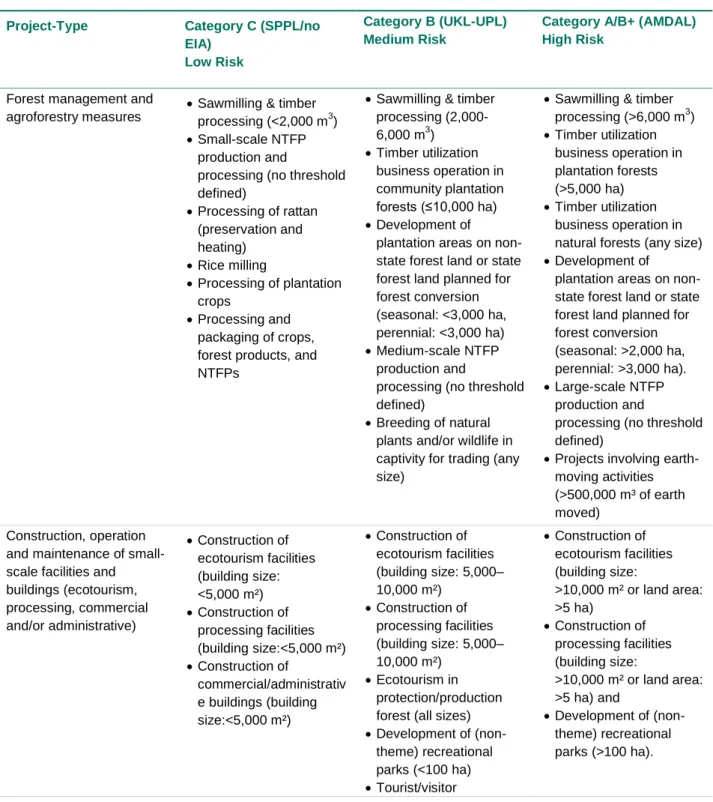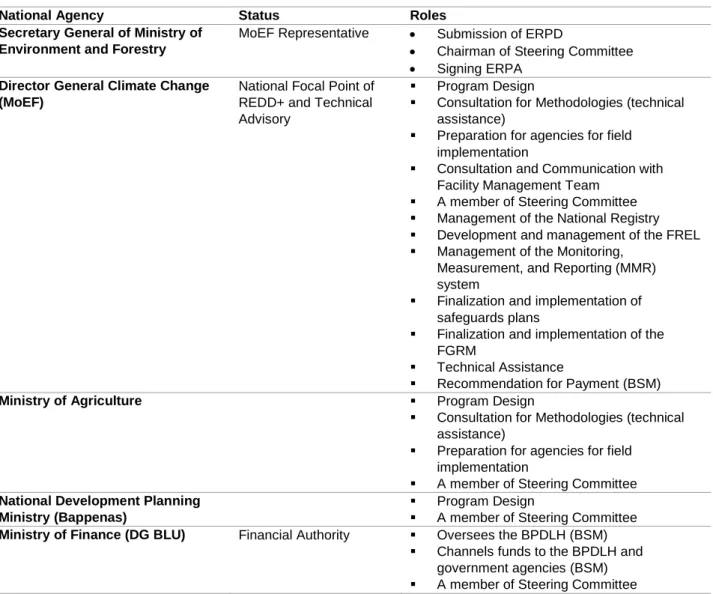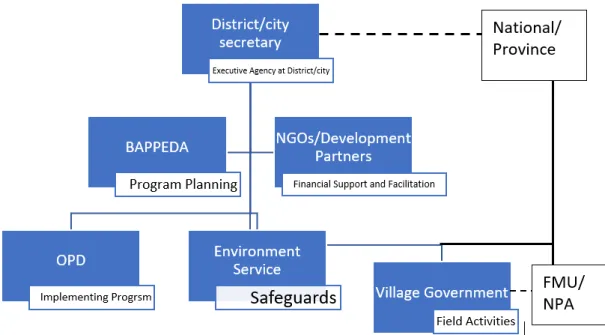EIA/AMDAL Environmental Impact Assessment/Analysis Menengai Dampak Lingkungan ESMF Environmental and Social Management Framework. This ESMF addresses environmental and social management for the J-SLMP and lays the groundwork for the future ERP in Jambi. The proposed objective of developing the SLMP is to improve sustainable landscape management that reduces land-based GHG emissions in Jambi.
INTRODUCTION
These safeguards will be tested and continue to be refined as part of the overall capacity-building support under the pre-investment grant. Overall management of safeguards for the future ERP will be reviewed and approved by the World Bank prior to the signing of the ERPA.
STRATEGIC ENVIRONMENTAL AND SOCIAL ASSESSMENT
To date, consultative processes and analytical components in SESA have been used to inform the development of the ESMF. Both the SESA and the ESMF, together with their associated frameworks, including the IPPF, RPF and PF, and the FGRM are integral parts of the REDD+ preparedness components.
ENVIRONMENTAL AND SOCIAL MANAGEMENT FRAMEWORK
As part of the ESMF, a resettlement planning framework has been developed that includes a process framework for addressing access constraints. The scope of the ESMF consists of principles, procedures and measures for managing potential environmental and social risks that may arise from the implementation of the J-SLMP.
LINK WITH EXISTING SAFEGUARDS INSTRUMENTS FOR REDD+
The framework includes supplementary annexes applicable to relevant activities under the project and must be used in conjunction with the applicable provisions of the World Bank's safeguards to ensure a comprehensive approach to handling environmental and social aspects. Efforts to synchronize the national security control frameworks and the ESMF for the J-SLMP have been made as part of the project preparation.
APPROACH AND METHODOLOGY
Data Collection
Results of research and studies that have been validated by scientific communities and/or consensus among key stakeholders to strengthen contextual analysis. Primary data sources were collected through a series of technical discussions and semi-structured interviews with stakeholder representatives.
Analysis
Data and information relevant to future ERP and contextual analysis to inform assessments of potential risks and impacts; and. As part of these ESMF consultations, village and district level community consultation was conducted between April and May 2019.
SCOPE OF THE ESMF
The scope of the ESMF and associated frameworks respond to the identified environmental and social risks of J-SLMP (see Chapter 4). The ESMF includes the screening and management of all relevant E&S risks and impacts where mitigation actions fall within the competence, capacity and authority of implementing agencies and development partners.
STAKEHOLDER CONSULTATIONS
Prior identification of the main drivers causing problems in the forestry sector will be reassessed in accordance with the next plan for follow-up discussions. A thorough evaluation of the implementation of this regulation must be carried out to find out the best future.
STRUCTURE OF THE ESMF
This list will be used as a basis for a preliminary review of environmental and social risks and will inform the inclusion of activities within the J-SLMP. The implementation of HCV represents one of the key safeguarding processes for the identification and assessment of environmental and social risks of key forest activities in WPK.
PUBLIC DISCLOSURE
The IPPF establishes a screening process, an engagement strategy and requirements for free, prior and informed consultations if J-SLMP activities affect indigenous peoples and other community groups that meet the criteria under OP 4.10. This appendix outlines the scope of responsibilities for environmental and social security personnel assigned to oversee ERP implementation.
PROGRAM DESCRIPTION
COMPONENT 1: STRENGTHENING POLICY AND INSTITUTIONS
Sub-component 1.1: Institutional Strengthening
In addition, institutional strengthening will also include the translation of policies into technical guidelines to allow implementation on the ground. Institutional strengthening will also encourage the clear definition of the institutional mechanism to allow cooperation between the government, the private sector and civil societies.
Sub-component 1.2: Enabling Environment for ER Program
A comprehensive and robust protection system will need to be developed by provincial institutions with support from consultants, NGOs, communities and the private sector. Strategies to mitigate the risks of chargebacks and displacements must be documented as part of ISFL and World Bank requirements.
Sub-component 1.3: Policy and Regulation
Once completed, the system will continue to be used in monitoring land and forest resources, reporting changes and verifying emission reductions (MRV). The implementation of the safeguard frameworks being prepared with support from J-SLMP should be assessed during the ERP readiness phase, considering relevant aspects of legal frameworks, capacity building and access to finance to ensure effective implementation and monitoring of safeguards to guarantee. Risks of rollbacks and relocation should be considered in the readiness phase.
COMPONENT 2: IMPLEMENTING SUSTAINABLE LAND
Sub-component 2.1: Integrated Forest and Land
The SLMP will benefit from the involvement of local communities and the private sector to protect conservation forests, including compliance with the zero-burn policy. Additional values from biodiversity conservation include conservation of key forest wildlife species, increased capacity of BKSDA and national parks personnel in SMART patrol, resort-based management, and resolution of human-wildlife conflict.
Sub-component 2.2: Private Sector Partnerships for
Improving forest management will also benefit the development of infrastructure (for soil and water conservation) and a decentralized forest management system through the FMU. In addition, such a balance will also be achieved through jurisdictional management tools to ensure compliance with the principles of "no deforestation and no fire".
COMPONENT 3: PROJECT MANAGEMENT, MONITORING AND
This approach will help increase knowledge of sustainable forest management among farmer groups and develop supply chain management tools to facilitate compliance with certification standards, including “no deforestation and no fire” sustainability aspects. A consultation process will take place to discuss how J-SLMP supports ERP preparation and future implementation, including how the project contributes to addressing the causes of deforestation and forest degradation.
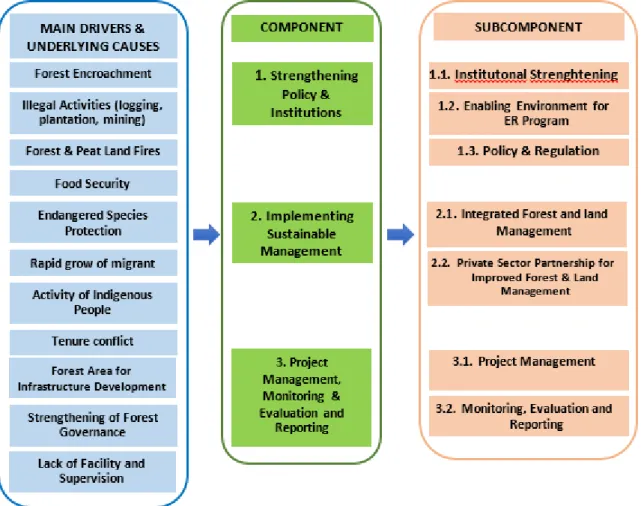
POLICY, LEGAL AND INSTITUTIONAL FRAMEWORKS
GOVERNMENT OF INDONESIA REGULATIONS
Article 28I (3) (second amendment) states that "Cultural identities and rights of traditional communities shall be respected in accordance with the development of time and civilization". The Constitutional Court ruled that the Adat forests are not part of the state forest (Kawasan Hutan).
WORLD BANK SAFEGUARDS POLICIES
- OP 4.01 Environmental Assessment
- OP 4.04 Natural Habitats
- OP 4.09 Pest Management
- OP 4.10 Indigenous Peoples
- OP 4.11 Physical Cultural Resources
- OP 4.12 Involuntary Resettlement
- OP 4.36 Forests
5These criteria include a) self-identification as members of a distinct indigenous cultural group and recognition of this identity by others; b) collective attachment to geographically distinct habitats or ancestral areas in the project area and to the natural resources in these habitats and areas;. The project will not require land acquisition, which will lead to direct involuntary resettlement and/or life displacement.
INSTITUTIONAL FRAMEWORKS
National Level Policies (Other Areas of Application/APL): Policies related to land allocation validation fall under the jurisdiction of the Ministry of Agriculture and Physical Planning. Forest management policies fall under the Forestry Agency's jurisdiction, while grassroots implementation is administered through the FMUs (KPH).
GAP ANALYSIS
Among the environmental and social risks, Indigenous Peoples and Involuntary Displacement are one of the important aspects that should be emphasized in the design of the SLMP-programme. UKL-UPL assessments are expected to be required for the nature and extent of ERP activities.
OTHER PROJECTS AND PROGRAM SAFEGUARDS
Necessary coordination and cooperation will be done with relevant implementing agencies under the leadership and coordination of DGCC and Jambi Development Planning Bureau (BAPPEDA) during the implementation of the project.
ASSESSMENT OF ENVIRONMENTAL AND SOCIAL RISKS
SUMMARY OF ENVIRONMENTAL AND SOCIAL RISKS
To be assessed as part of the ongoing SESA process under the World Bank Interim Guidance on TA. E&S aspects for the ER design should be assessed as part of the ongoing SESA process according to the World Bank Interim Guidance on TA.
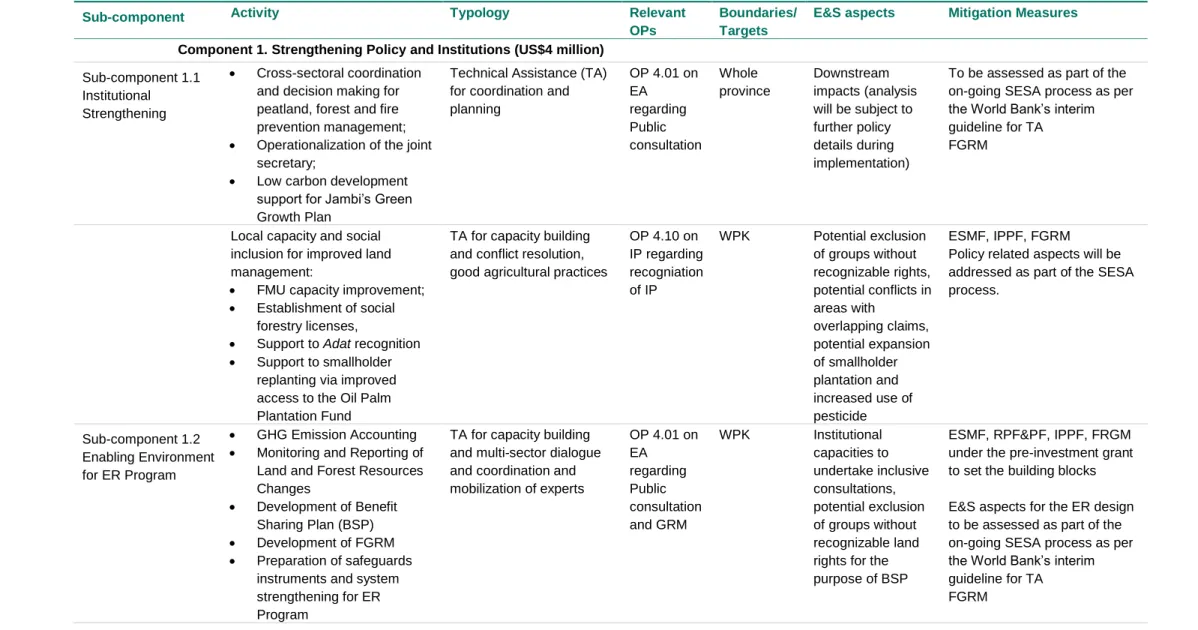
ESMF IMPLEMENTATION
ENVIRONMENTAL AND SOCIAL PROCEDURE
- Negative List Screening
- Screening of Environmental and Social Risks
- Preparation of Environmental and Social Management Plans
- Review and Approval
- Implementation of Safeguards and Verification
- Monitoring and Reporting
Moderate Potential adverse risks and impacts on the human population and/or the environment are unlikely to be significant. The quality control of environmental and social plans and permits will be carried out by appointed experts for the environment and space at the provincial level.
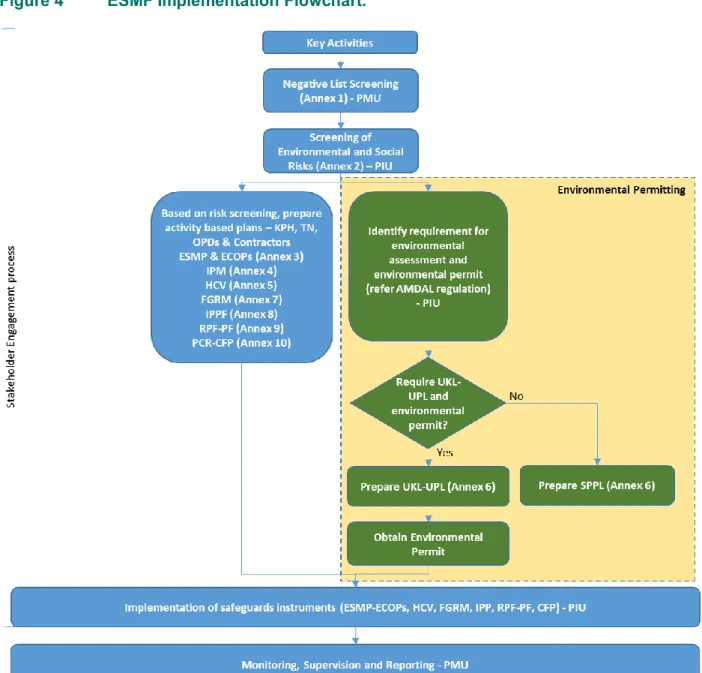
MANAGEMENT OF INDIRECT RISKS AND IMPACTS
ECOPs will be adopted for low-risk subprojects and therefore no separate ESMPs are required. The safeguards will be implemented for the J-SLMP activities by the implementing agencies (OPDs) after approval of the environmental and social plans and permits.
MANAGEMENT OF RISKS ASSOCIATED WITH POLICY
Synergy and coordination between national, state and district levels for safeguards management will be further defined and strengthened as the ER program is prepared. When it is assessed by E&S specialists that policy development and technical assistance may have widespread and adverse E&S implications, the Provincial Security Committee and the Provincial Secretary (SEKDA/BAPPEDA), in consultation with relevant specialists, will determine whether an impact assessment is necessary or further . Consultations are needed to ensure wider stakeholder involvement and mainstream E&S input into overall policy development and technical assistance processes.
PROJECT INSTITUTIONAL ARRANGEMENTS
Coordinate all activities done by OPD related to J-SLMP and ERP at district/city level. OPD District/City Implementing Agencies implementing J-SLMP and future ERP in district/city and field area.
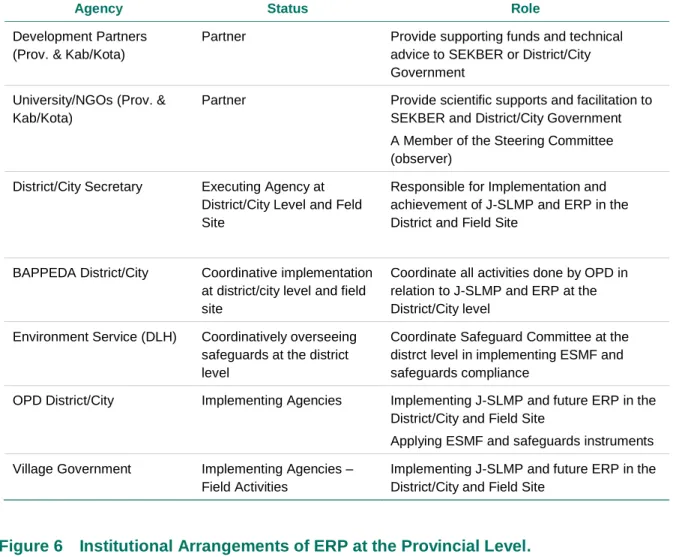
INSTITUTIONAL ARRANGEMENTS AT THE ACTIVITY LEVEL
While the protection committee at the provincial level (under the coordination of the environment office) will report to the provincial level implementation agency, in this case Bappeda or Sekretis Daerah (provincial secretary), the district protection committee will report under the coordination of the district environment office. to Sekretis Daerah (district secretary). The provincial and district protection committees will be supported by environmental and social management specialists at the PMU.
CAPACITY BUILDING PLAN AND INDICATIVE FINANCIAL
The general material will be related to the potential environmental and social risks of J-SLMP and ERP. Provide outreach information on J-SLMP and ERP components to a wider audience and gain support for the implementation of the ESMF.
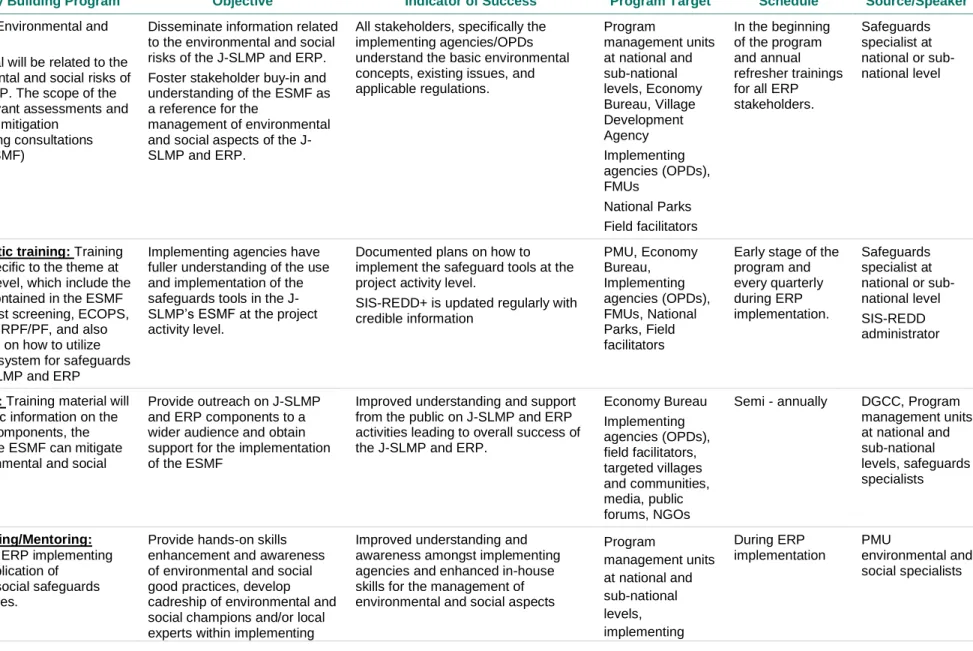
SAFEGUARDS MONITORING AND REPORTING
Regular Safeguards Monitoring
Regular Safeguards Reporting
Sub-optimal Involving women to contribute to forest management will help reduce encroachment and deforestation. Lack of access to alternative livelihood program to address economic needs of communities (could be developed by Village Funding / DD/ ADD).
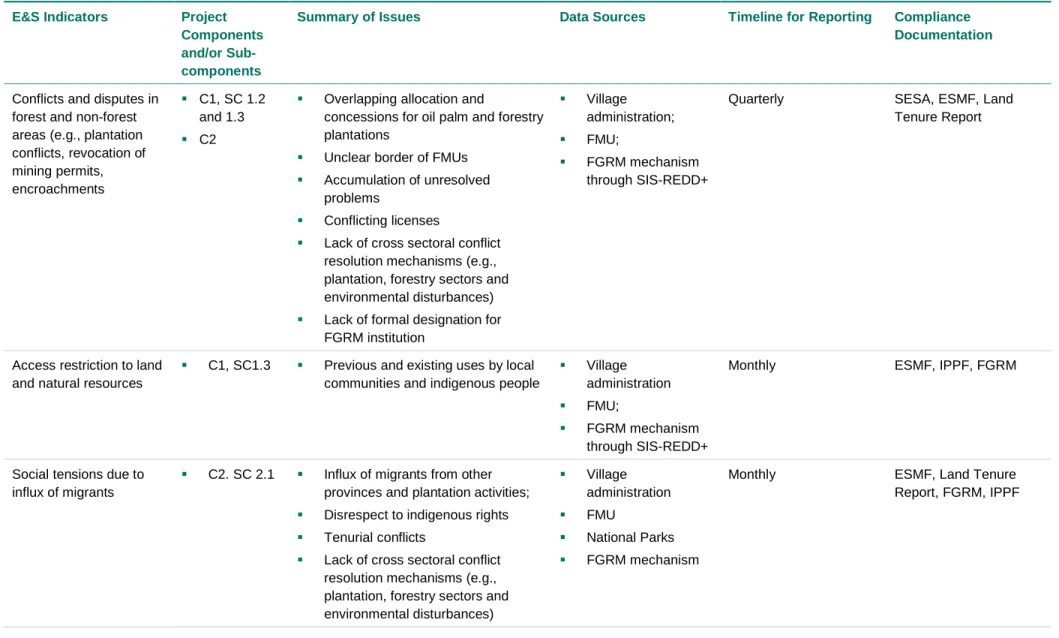
Safeguards Reporting through SIS REDD+
Regarding the Defense Information System reporting for Jambi, it is still being discussed who will report it to the national system.
INFORMATION DISCLOSURE
FEEDBACK GRIEVANCE REDRESS MECHANISM
J-SLMP AND ERP NEGATIVE LIST
SCREENING AGAINST ENVIRONMENTAL AND SOCIAL
ENVIRONMENTAL CODES OF PRACTICES
Areas of the site undisturbed by construction activities shall be maintained in their existing conditions. All the above requirements should be assessed, documented and reflected in the participating CSOs/CBOs progress reports on implementation.
GUIDANCE NOTE FOR INTEGRATED PEST
Describe the non-chemical pest management methods, IPM approaches available in the country. In the case of chemical pesticide use, assign responsibility for procurement, use and disposal of pesticides and proper record keeping.
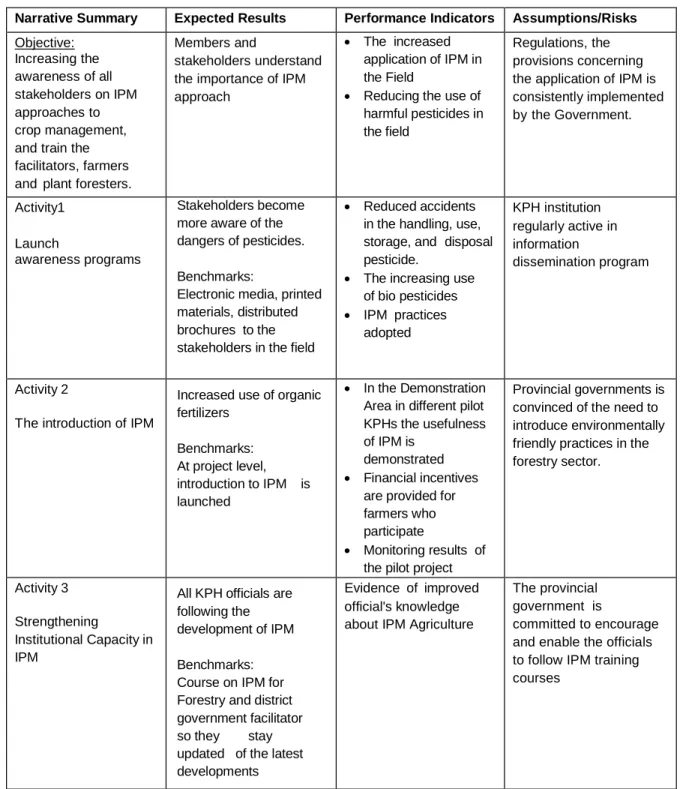
BIODIVERSITY MANAGEMENT FRAMEWORK AND
Effectiveness of management strategies and actions to maintain and/or fully enhance high conservation values. A Strategic Environmental and Social Assessment (SESA) was conducted as part of the preparation of the J-SLMP and ERP.
